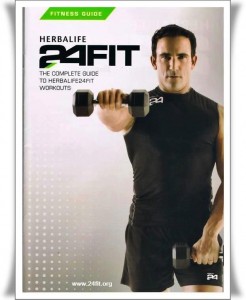Category Archives: Strength Training
Strength Training For Endurance Athletes
April 11th – Line from my lecture this weekend at the Boston Marathon: “Runners can either strength train, or they can rehab.”
Tom Holland is an elite endurance athlete and physiologist committed to helping people live a better life through fitness. Tom has run over 50 marathons, is a 19-time Ironman® triathlete.

“Done properly, strength training for the endurance athlete is in many ways the quickest way to achieve the structural goals of the Base Training Phase of triathlon training: Joint Stability and Musculoskeletal Resiliency. Using light weights and rubber band exercises which isolate the small muscles around each joint will not only help prevent injury but will directly improve performance throughout the season. If you were to do nothing more than the low-intensity strength work of early season training the payoff in developing musculoskeletal resiliency and biomechanic efficiency will benefit you all year. ” Robert Forster
Physical Therapist and Performance Specialist Robert Forster developed the Herbalife24FIT program with Herbalife. He is one of the leading physical therapists for athletes, both recreational and elite. Over the course of his 30-year career, he has successfully trained Olympic gold medalists, U.S. Open and Wimbledon champions, NBA superstars and triathlon world-record holders. Tired of encountering ill-advised training programs that only cause more injury, Robert created a new approach to physical therapy, which is divided into phases that follow the body’s natural healing and growth patterns. His practice in Santa Monica, California, provides athletes with effective, scientific and injury-free solutions for health and performance.
How to Use The 24 Fit Programme – On Alternate days i.e. Monday, Wednesday, Friday. Use with light weights and resistance bands.
Additional Information:
Training Series for Runners
Whether you achieved your goal time in your last event or failed to finish in good form, it’s time to assess your performance and make adjustments in your training to maintain progression. The most common problems encountered in the marathon and long training runs include joint pain, gastro-intestinal distress, muscle cramping and energy crash. If you have suffered these issues you are not alone but you can rest assured solutions are at hand when you follow the science.
The fitness gains from the efforts of your last long run will evolve over time if you allow for recovery and so it’s time to figure what’s next. The short answer is a training method known as Periodization training which utilizes heart rate specific training and recovery in order to avoid most common training errors, burnout and injury. If your goal is to reach your highest potential as a runner only workouts at the appropriate intensity will produce the results you strive for. Discover how metabolic testing will diagnose your current fitness and illuminate the path to improvement. Similarly, structural analysis and run gait evaluation will produce real data and actionable solutions to your physical problems.
At this lecture you will learn:
- How to maximize your time and efforts, by training smarter not harder.
- How heart rate testing & training will improve your fitness & performance.
- Periodization method of training to peak for your next event.
- How a home strength and flexibility program can make you faster and keep you healthy.
- How to scientifically calculate your caloric and hydration requirements to avoid cramping, bonking and fading at the end of long efforts.
- How inadequate recovery from hard workouts actually makes you gain weight.
WHEN: Tuesday, April 9th at 6:30pm
WHERE: Top to Top – 2621 Wilshire Blvd., Santa Monica
Call 310.582.8212
25 Reasons To Exercise
We can lump exercise into three broad categories: strength training (weightlifting, core training), cardiovascular conditioning (running, cycling, aerobics), and flexibility training (yoga, stretching). As an athlete, you probably participate in all three. Let’s look at the specific ways in which each promotes optimal health and function:
Flexibility Training
- Improves range of motion
- Reduces risk of injury
- Reduces post-workout soreness
- Improves posture
- Improves circulation to muscles
- Enhances neuro-muscular coordination
- Improves balance
Cardiovascular Conditioning
- Increases oxygen intake
- Increases the body’s oxygen use efficiency
- Increases cardiac output and efficiency
- Increases blood volume
- Improves stamina
- Improves lung health and capacity
- Reduces blood pressure and lowers resting heart rate
- Improves cholesterol ratio (HDL/LDL)
- Increases insulin sensitivity
- Improves circulation to active muscles
- Decreases symptoms of anxiety and depression
Strength Training
- Maintains strength and power
- Increases lean body mass
- Greater core strength prevents back problems
- Boosts metabolic rate by up to 15%, aiding in weight control
- Prevents osteoporosis
- Increases ligament tensile strength
- Increases tendon tensile strength
The 24 Fit Programme developed by Robert Forster, includes the above 3 elements.
Thanks to Dr. Louis Ignarro and Dr. Andrew Myers for this list. Health Is Wealth


